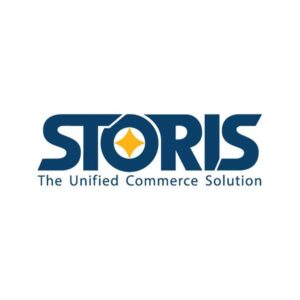Inventory management is at the top of every retailer’s mind. It is the foundation of your business and a dynamically moving target, especially in today’s world. Yet, inventory control can become your competitive advantage when your business has inventory fundamentals in place.
Tracking inventory across your supply chain and providing consistency across channels is no easy task. Below are executable ideas, plus 4 advanced tips with new insights on inventory accuracy and optimized movement.
Executable Ideas:
- The first step in optimizing inventory management is creating an organized record system. Set up a structure of showroom locations, distribution centers, delivery trucks, and web inventory to know where the inventory resides in your supply chain. Inventory quantities and movement should reflect activity that occurs across your operation in a centralized database. Ideally, inventory tracking is automated in real-time because this saves time, eliminates human error, and reduces shrink. As a bonus tip, implementing barcoding streamlines these processes even further. Less work and better results are always a win.
- Next, you want to determine how to classify your merchandise. Having a detailed inventory hierarchy gives you greater opportunities to analyze product performance. Product classifications can include Product Category, Group, Collection, Vendor, and Brand. Your inventory should designate stock items, customizable special order frames, floor samples, and merchandise you plan to sell as-is. If your products are going to be made available on the web, then the record details for product descriptions, dimensions, and prices are ideally managed centrally, so the information is consistent wherever that SKU is sold.
- The next step is understanding your inventory’s performance to hit your margin goals. By comparing your average landed cost for an SKU against its selling price, you can stay on top of the overall health of your goods and the margin goals you set. Further, ensuring you are applying discounts consistently and only when eligible is key to profitability. Software tools can automatically enforce discounting rules and apply discounts during valid promotional time frames.
- Another important step is to understand accurate product availability. The goal is to deliver goods to your customer by the expected date you communicated – ideally as early as possible. By recording inventory statuses such as on a purchase order, in-transit, available to sell, or reserved for an order, your RSAs can decide what to sell with precise data. By using your on-hand inventory information with your knowledge of vendor lead times, you can communicate an attainable availability date to your customer and meet their delivery expectations. By avoiding broken promises, your business will achieve high customer satisfaction.
4 New Advanced Inventory Control Tips:
- Having an optimized replenishment strategy that works like a well-oiled machine is critical. Set a minimum and safety stock level for each product in your core lineup. This can be used to trigger automated warnings to your buyers when inventory falls below ideal stock quantities. Additionally, setting vendor lead times tracks how long it takes you to receive goods from a vendor. Monitoring these settings routinely during periods of supply chain fluctuation is important. Choose a software solution that can monitor your current sales rate to forecast for a product. By balancing stock levels, lead times, and sales rates, you can optimize your open-to-buy dollars while ensuring you are appropriately stocked to meet demand on best sellers.
- With supply chain delays occurring, there is a good chance that you are receiving merchandise and immediately turning it around to fulfill an order. Setting up a cross-dock at your distribution centers can be a great way to optimize inventory flow. If merchandise doesn’t need to be stored in your warehouse before loading onto a delivery truck, set the receiving location to your cross-dock. At the cross-dock, check the quality of the goods and mark them as received, but then immediately load them onto a delivery truck. Cross-docking can be a very efficient warehousing strategy to consider.
- Additionally, you may find yourself out-of-stock on inventory in your primary fulfillment locations in today’s market. But it is important to you as a retailer to meet as much customer demand as possible. If your organization has a network of DCs and warehouse locations, setting up a stock schema to check secondary or tertiary fulfillment locations for a piece can help you meet more demand with the items in your possession. The software can help you initiate automatic transfers in this scenario to meet more customer expectations.
- Finally, to maintain a standard of inventory excellence in your warehouse, setting a routine structure for auditing is critical. A best practice for most retailers is performing an annual full physical inventory to determine a true inventory valuation against your financial records and determine your annual shrink. This Full Physical Inventory process is too time-consuming to perform routinely. Yet if you are only auditing your inventory once a year, you are more likely to find problems with solutions that are too far gone to trace. To resolve this, implementing a regular cadence of cycle counts keeps everyone in your warehouse performing at their peak. Pick a random area of your warehouse to spot check weekly to keep a pulse on your inventory all year long and implement a strategy to correct issues in real time.
When you properly monitor inventory, a key asset of your business, you can uncover opportunities to tighten control.
Since 1991, HFA Solution Partner, STORIS has helped American Furniture Warehouse consistently reach 99.8% inventory accuracy across a now $800M operation. STORIS provides Unified Commerce Solutions to over 500 home furnishings retailers and supports over $1.6B in HFA retailer revenue and 6,000 users. Their multi-channel solutions manage customers, inventory, and point of sale across showrooms, websites, and mobile touchpoints. Learn more.
Also, check out the HFA Quick Click Solutions Video: How to Make Inventory Control Your Competitive Advantage and click here for more operations and inventory management resources.









